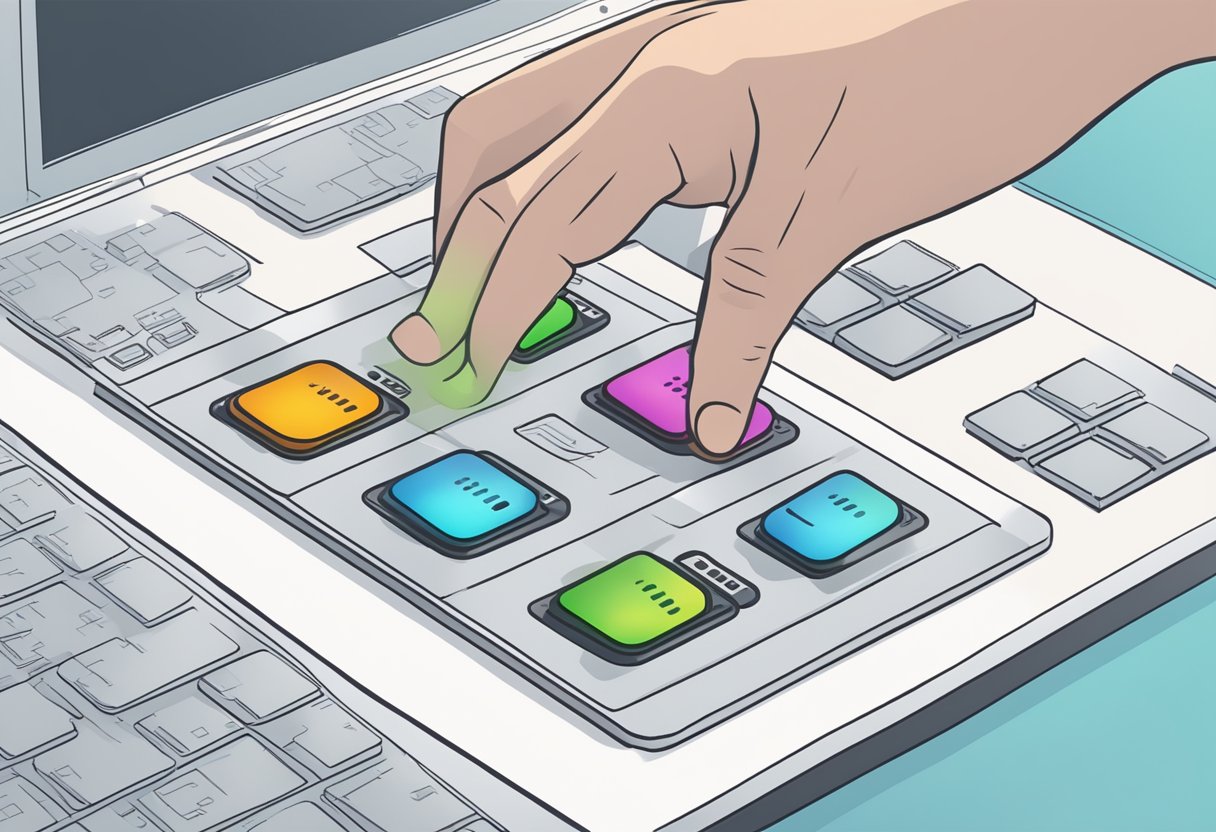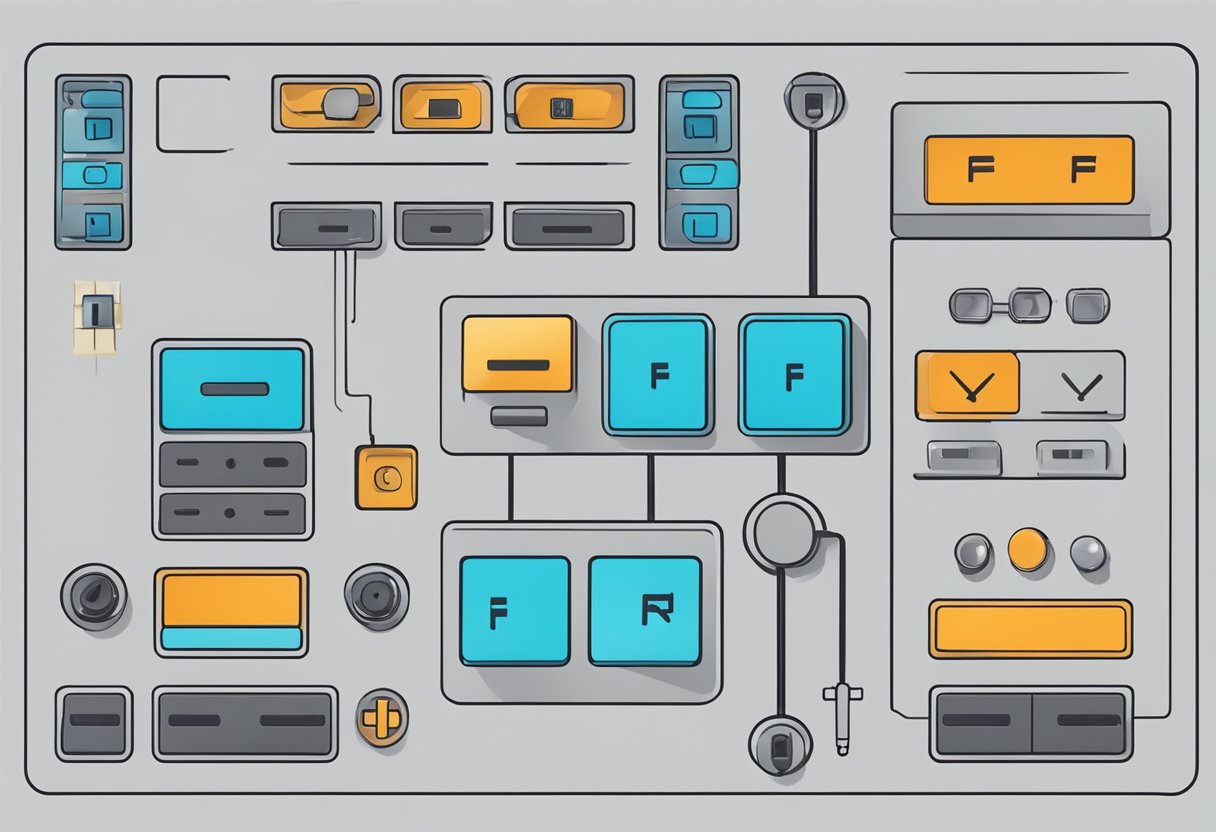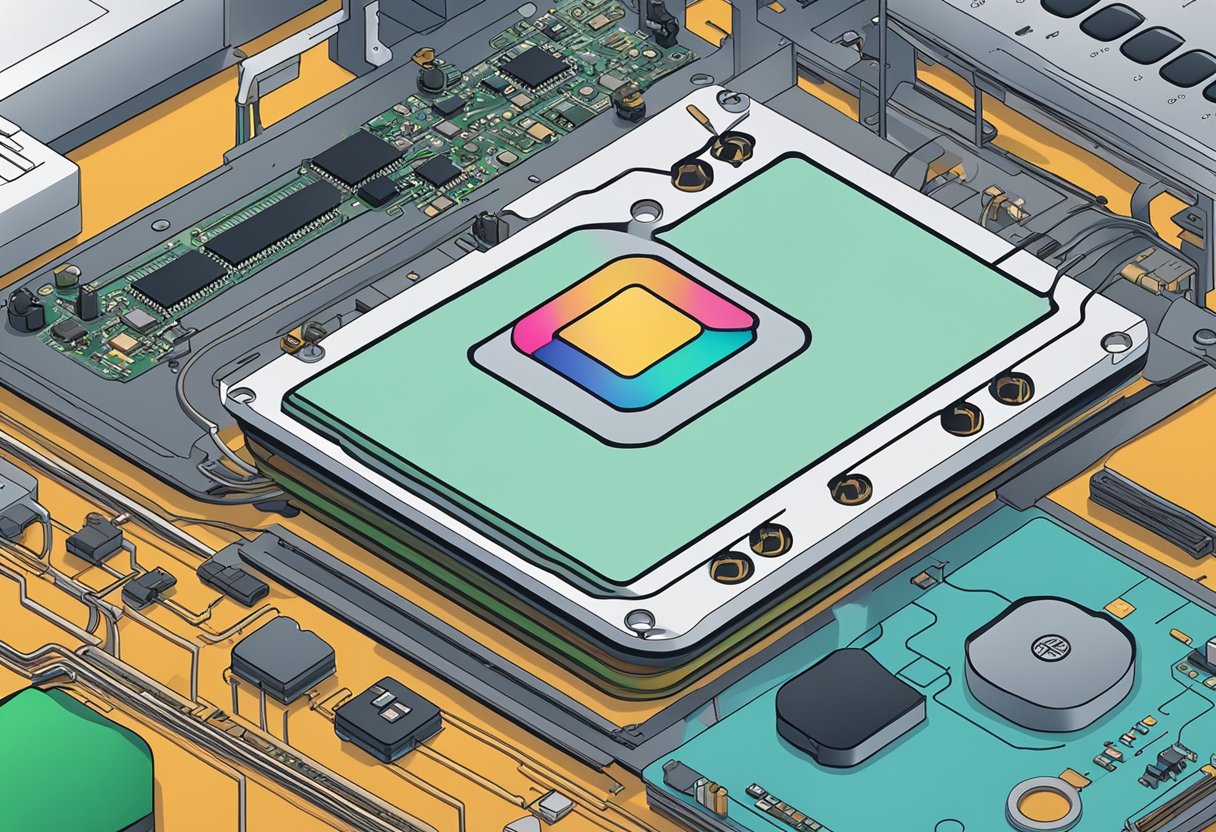Contact
Write to Us And We Would Be Happy to Advise You.
Do you have any questions, or would you like to speak directly with a representative?
By peter
If you’re looking for a user-friendly and reliable way to control electronic devices, you might want to consider using a tactile membrane switch. This type of switch is a flat, flexible, and pressure-sensitive component that can be used to activate a circuit by pressing on it. Tactile membrane switches are used in a variety of applications, including medical devices, consumer electronics, automotive, and industrial equipment.

One of the benefits of using a tactile membrane switch is that it provides a clear tactile feedback to the user, letting them know when the switch has been activated. This feedback can be important in situations where the user needs to know that the switch has been activated, such as in medical devices where accuracy is critical. Tactile membrane switches are also durable and long-lasting, making them a cost-effective solution for many applications.
Another advantage of using a tactile membrane switch is that they can be customized to meet the specific needs of a particular application. For example, they can be designed to have different actuation forces, travel distances, and tactile responses. Additionally, they can be printed with custom graphics and icons to provide visual cues to the user. With so many customization options available, tactile membrane switches offer a versatile and flexible solution for controlling electronic devices.

Tactile membrane switches are a type of electrical switch that are commonly used in various electronic devices such as remote controls, medical devices, and industrial machinery. They are designed to provide a tactile feedback to the user when pressed, giving them a sense of confirmation that the switch has been actuated. In this section, we will discuss the operating principles, components, and materials used in tactile membrane switches.
Tactile membrane switches operate on the principle of a flexible membrane that contains a conductive circuit. The membrane is made up of several layers of materials, including polyester, polycarbonate, or polyimide. The conductive circuit is printed on the bottom layer of the membrane using conductive ink or copper traces.
When the switch is pressed, the top layer of the membrane is deformed, causing the conductive circuit to make contact with the bottom layer, completing the circuit and sending a signal to the device. The tactile feedback is provided by a dome-shaped metal or polymer switch that is placed over the conductive circuit. When the switch is pressed, the dome collapses and provides a tactile sensation to the user.
Tactile membrane switches consist of several components, including the membrane, the adhesive layer, the graphic overlay, and the dome switch. The membrane is the most important component, as it contains the conductive circuit that completes the signal. The adhesive layer is used to attach the switch to the device, while the graphic overlay provides the user interface and is printed with symbols or text.
The dome switch is the component that provides the tactile feedback to the user. It is made of metal or polymer and is designed to collapse when pressed, providing a tactile sensation. The choice of material for the dome switch depends on the application, with metal switches being more durable and polymer switches being more cost-effective.
The materials used in tactile membrane switches are chosen for their durability, flexibility, and resistance to environmental factors such as moisture, chemicals, and temperature. Polyester, polycarbonate, and polyimide are commonly used for the membrane, while acrylic and polycarbonate are used for the graphic overlay. The adhesive layer is typically made of acrylic or silicone, while the dome switch can be made of stainless steel, nickel-plated steel, or polyester.
In conclusion, tactile membrane switches are a reliable and cost-effective solution for various electronic devices. They operate on the principle of a flexible membrane that contains a conductive circuit and provide a tactile feedback to the user when pressed. The components and materials used in tactile membrane switches are carefully chosen for their durability, flexibility, and resistance to environmental factors.

When designing a tactile membrane switch, there are several factors to consider. These include ergonomics and user interface, electrical specifications, and environmental factors.
Ergonomics and user interface are key considerations when designing a tactile membrane switch. The switch should be easy to use and comfortable for the user. The switch should also be designed to minimize the risk of user error and ensure that the user can easily and accurately operate the switch.
To achieve this, consider the following design elements:
When designing a tactile membrane switch, it is important to consider the electrical specifications of the switch. These specifications include the following:
To ensure that the switch meets these specifications, it is important to work closely with an experienced design team.
Environmental factors are also important considerations when designing a tactile membrane switch. The switch should be designed to withstand the environmental conditions in which it will be used. These factors include the following:
To ensure that the switch meets these environmental requirements, it is important to work with a design team that has experience in designing switches for a wide range of environments.
To create a tactile membrane switch, several intricate steps are involved. Here are the two main processes:
The first step is to print the circuitry onto a thin, flexible substrate material, usually polyester or polycarbonate. The circuitry is printed using a conductive ink, which is usually made of silver or carbon. The printing process can be done either by screen printing or digital printing, depending on the complexity of the design. Once the circuitry is printed, it is then cured in an oven to ensure that the ink adheres to the substrate.
After the circuitry is printed and cured, the next step is to cut the substrate into the desired shape and size. This is typically done using a computer-controlled cutting machine, which can cut the substrate with high precision. The cutting process can also include the creation of any necessary holes or slots for buttons, LEDs, or other components.
Once the substrate is printed and cut, the next step is to assemble the membrane switch. This involves attaching the top and bottom layers of the switch together, with the circuitry sandwiched in between. The layers are typically made of polyester or polycarbonate, and can be printed with graphics or text.
To create the tactile feedback, the top layer of the switch is typically embossed with raised or recessed features. These features can be created using a variety of techniques, such as heat embossing or laser etching. The embossing process can also include the creation of any necessary windows or cutouts for LEDs or other components.
Finally, the switch is tested to ensure that it functions properly. This can include testing for electrical continuity, tactile feel, and durability. Once the switch has passed all of the necessary tests, it is ready to be integrated into the final product.
Tactile membrane switches are widely used in various industries due to their durability, flexibility, and low cost. Here are some of the most common applications and use cases for tactile membrane switches.
Tactile membrane switches are commonly used in consumer electronics such as remote controls, calculators, and gaming devices. These switches provide a tactile feedback that enhances the user experience and makes it easier to operate the device. They are also very durable and can withstand repeated use without wearing out.
Tactile membrane switches are also used in medical devices such as patient monitors, infusion pumps, and diagnostic equipment. These switches are ideal for medical devices because they can be easily sterilized and are resistant to moisture and other environmental factors. Additionally, the tactile feedback provided by these switches makes it easier for medical professionals to operate the devices, even when wearing gloves.
Tactile membrane switches are also commonly used in industrial controls such as machinery, equipment, and control panels. These switches are ideal for industrial applications because they are durable, reliable, and can withstand harsh environmental conditions. Additionally, the tactile feedback provided by these switches makes it easier for workers to operate the equipment, even when wearing gloves or protective gear.
In conclusion, tactile membrane switches are versatile and widely used in various industries due to their durability, flexibility, and low cost. Whether you are designing a consumer electronic device, a medical device, or an industrial control system, tactile membrane switches are an excellent choice.
The evolution of membrane switch technology has paved the way for advancements and innovations that have improved their performance, reliability, and user experience. In this section, we will explore two of the most notable advancements in tactile membrane switch technology: Smart Touch Technologies and Haptic Feedback Integration.
Smart Touch Technologies are a recent innovation in tactile membrane switch technology that has revolutionized the way we interact with electronic devices. These technologies enable users to interact with their devices in a more intuitive and natural way, making them more user-friendly and efficient.
One of the most notable Smart Touch Technologies is the Capacitive Touch Sensor. This technology uses the electrical properties of the human body to detect touch, eliminating the need for a physical switch. Capacitive Touch Sensors are highly responsive and accurate, making them ideal for applications that require precise input.
Another Smart Touch Technology is the Force Touch Sensor. This technology enables devices to detect the level of force applied to the touch surface, allowing for a more nuanced and expressive form of input. Force Touch Sensors are commonly used in smartphones and tablets, where they enable users to perform a range of actions by varying the pressure of their touch.
Haptic Feedback Integration is another significant advancement in tactile membrane switch technology that has improved user experience. Haptic feedback refers to the use of tactile sensations, such as vibrations and pulses, to provide feedback to the user.
Haptic feedback integration is commonly used in smartphones and tablets to provide users with tactile feedback when they interact with the touch screen. This feedback helps users to confirm that their input has been registered, making the device more responsive and user-friendly.
In addition to smartphones and tablets, haptic feedback integration is also used in gaming controllers and other input devices to provide users with a more immersive and engaging experience. By providing tactile feedback, these devices enable users to feel more connected to the digital world, enhancing their overall experience.
In conclusion, advancements and innovations in tactile membrane switch technology have improved the way we interact with electronic devices. Smart Touch Technologies and Haptic Feedback Integration are just two examples of the many innovations that have made these devices more user-friendly, efficient, and engaging.
Do you have any questions, or would you like to speak directly with a representative?